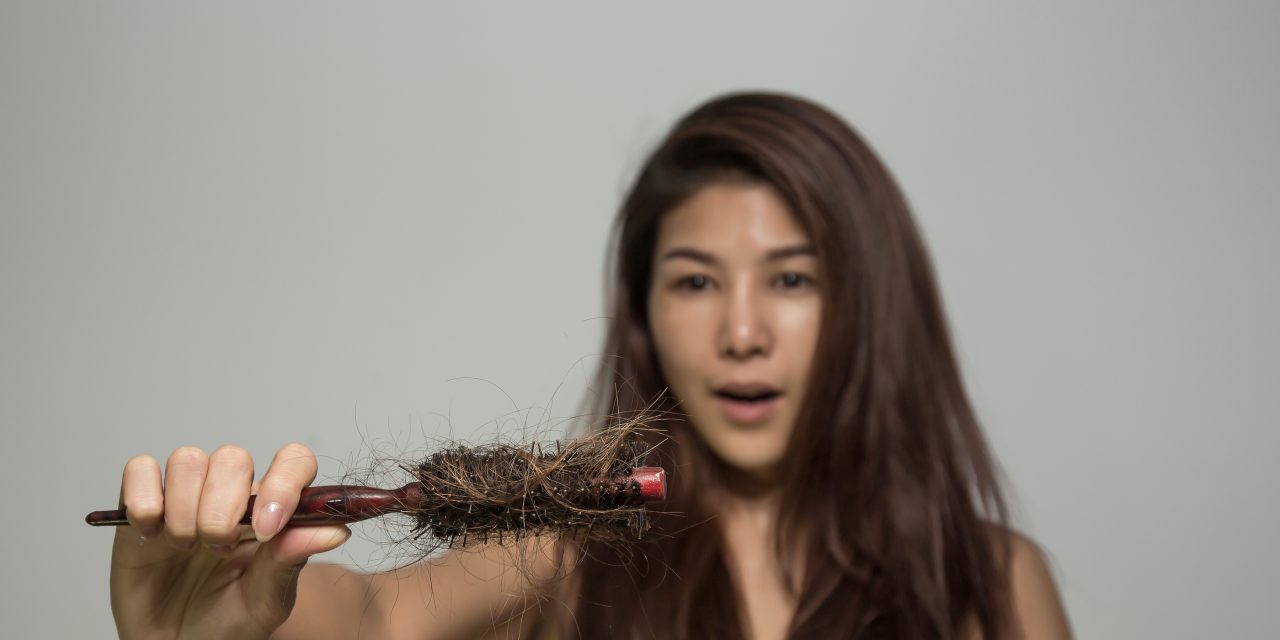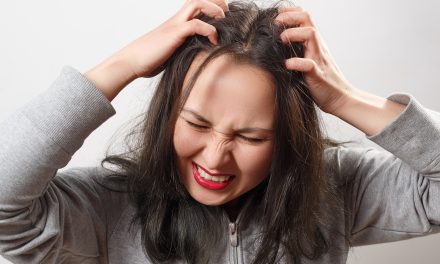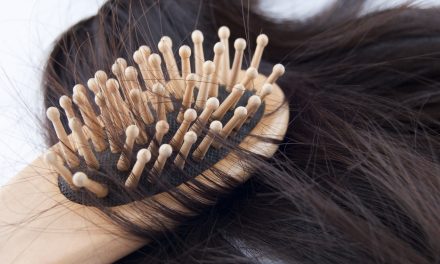Hair loss is a common concern affecting people of all ages and genders.
It often seems like an inevitable part of life, but what many might not know is that genetics play a significant role in determining who experiences hair loss and when.
Hair loss genes primarily come from our genetic makeup, influencing how and why some people lose hair earlier than others.

Scientists have discovered that both maternal and paternal genes can contribute to hair loss.
It’s not just about inheriting a single “baldness gene.” Instead, various genes combine to affect hair characteristics, including thickness, shape, and growth patterns. The impact of these genes can explain why some individuals are more prone to hair loss despite having similar lifestyles and environmental factors as others.
Recent studies also explore potential links between genetics and other factors such as nutrition and hormonal changes.
While genes set the stage, these external influences can either exacerbate or mitigate the effects of genetic predispositions. Researchers continue to investigate these interactions to better understand hair loss and how to manage it effectively.
Key Takeaways
- Genetics heavily influence hair loss patterns.
- Both maternal and paternal genes contribute to baldness.
- External factors can impact genetic predispositions for hair loss.
Understanding Hair Loss
Hair loss is often caused by various factors, including genetics and hormonal changes.
Common issues like androgenetic alopecia, also known as male and female pattern baldness, and alopecia areata involve complex genetic components that lead to different symptoms and treatments.
Types of Hair Loss
There are several types of hair loss that individuals may experience. Androgenetic alopecia is the most common form, affecting millions worldwide.
In men, it is often called male pattern baldness, characterized by receding hairlines and thinning on the crown. In women, female pattern baldness leads to thinning hair across the scalp.
Another type is alopecia areata, an autoimmune condition leading to sudden, patchy hair loss. This form can affect both males and females and sometimes even resolves without treatment. Each type of hair loss can manifest differently, depending on the underlying causes and individual genetic predispositions.
The Role of Genetics in Hair Loss
Genetics play a crucial role in hair loss. The presence of certain genes can predispose individuals to conditions like androgenetic alopecia. Research shows that specific genetic markers are linked to the regulation of hair growth cycles.
For example, gene variants can affect hormone levels, influencing hair follicle health and development. In males, genetic susceptibility often results in male pattern baldness, whereas in females, it may manifest as female pattern baldness. Understanding the genetic influences on hair loss can aid in developing targeted treatments, potentially slowing or reversing the effects for those affected.
Genetic Contributors to Hair Loss
Hair loss can be traced back to specific genetic factors. These factors include chromosomal influences and patterns of inheritance that determine susceptibility to conditions like androgenetic alopecia.
Chromosomal Influences on Hair Loss
Certain chromosomes play a key role in hair loss. The X chromosome is particularly important because it carries genes related to hair growth. Some studies have shown that mutations on this chromosome can lead to male pattern baldness. Additionally, the AR gene, found on the X chromosome, is known to impact hair follicles, affecting how they respond to androgens.
Apart from the X chromosome, other autosomal chromosomes also influence hair thinning. Some alleles on these chromosomes can either be dominant or recessive, impacting the hair loss trait in different ways. The interaction of multiple genes across these chromosomes contributes to the complex biology of hair loss.
Hereditary Patterns of Baldness
Hereditary hair loss affects both men and women, often following distinct patterns. Male pattern baldness and female pattern hair loss are primarily regulated by genetic predispositions. For men, genetic susceptibility often means an earlier onset of baldness if a male relative has similar hair loss patterns.
In women, the pattern is generally less predictable but still significant. A mix of genes from both parents can determine the extent of hair loss. Research suggests that although both parents contribute, the maternal side may have a slightly stronger influence due to the X-linked androgen receptor gene. Additionally, the interplay between dominant and recessive alleles affects the likelihood of exhibiting hereditary baldness traits.
The Genetics of Hair Characteristics
Hair characteristics are influenced by various genetic factors. These include the genes that affect hair color and those that determine hair texture and patterns. Understanding these genetic components provides insight into the diversity of hair types across different populations.
Hair Color and Genetics
Hair color is determined by the type and amount of melanin produced by specialized cells in the hair follicles. There are two main types of melanin: eumelanin, which gives hair black or brown shades, and pheomelanin, which results in red or yellow tones. The ratio and concentration of these pigments are controlled by multiple genes.
Genes like MC1R, OCA2, and TYRP1 play vital roles in the production and regulation of melanin. Variations or mutations in these genes can lead to different hair colors and unique patterns. For instance, variations in MC1R are often linked to red hair. Each gene contributes to how much eumelanin or pheomelanin is present, affecting the final hair color. Learn more about hair and skin color genetics to see how these genes interact.
Hair Texture and Patterns
Hair texture, such as straight, wavy, or curly, is influenced by the shape of the hair follicle and the pattern of hair fiber arrangement. Genetic factors play a significant role in these characteristics. The shape of the follicle affects whether hair grows straight or curls and how tight those curls are.
Several genes, including TCHH and EDAR, are associated with the structural properties of hair. These genes affect keratin production and follicle development, resulting in diverse textures. Wavy hair is often the result of a balance between straight and curly gene expressions. The combination of genetic variations influences overall hair texture and diversity across populations. Detailed research on the biology of hair diversity provides additional insights into these genetic influences.
External Factors Affecting Hair Loss
Hair loss can be influenced by a range of external factors beyond genetics. Medications, stress, and diet play significant roles in affecting hair health. These elements can impact hair growth and shedding in various ways, leading to noticeable changes in hair condition.
Impact of Medications on Hair Loss
Certain medications can lead to hair loss as a side effect. Drugs used for cancer treatment, high blood pressure, arthritis, depression, and heart issues may cause hair thinning or shedding.
Chemotherapy, for example, targets rapidly dividing cells, which includes hair follicles. This can lead to significant hair loss.
Some other medications can influence hair health due to hormonal changes. Birth control pills and hormone replacement therapy may affect hair growth patterns.
Patients experiencing drug-induced hair loss can discuss alternatives or dosage adjustments with their healthcare provider to manage this effect. Discontinuing a medication may not immediately reverse hair loss, so ongoing communication with a doctor is essential.
Stress-Related Hair Loss
Stress can significantly impact hair health. When a person experiences high-stress levels, it can trigger conditions like telogen effluvium, where hair follicles enter the resting phase prematurely. This can cause noticeable shedding a few months after the stress event.
Chronic stress affects hormone levels, including cortisol, which can disrupt the hair growth cycle.
Managing stress through activities like yoga, meditation, or exercise can help maintain healthy hair. It’s crucial to address stress through lifestyle modifications or professional guidance if needed, to prevent hair loss and promote overall well-being.
Diet and Hair Health
A balanced diet is crucial for maintaining healthy hair. Nutrient deficiencies, particularly in iron, zinc, and vitamin D, can lead to weakened hair and increased shedding. Protein, which constitutes keratin, a primary component of hair, is essential for strength and structure.
Biotin and omega-3 fatty acids are also important for hair growth. Including foods like fish, nuts, seeds, and leafy greens can provide these nutrients.
Individuals should focus on a varied diet rich in vegetables, fruits, and lean proteins to support hair health. Consulting a nutritionist may be beneficial for those experiencing hair loss potentially linked to dietary issues.
Genetic Testing and Hair Loss
Genetic testing plays a significant role in understanding hair loss, especially when it comes to identifying specific genes responsible for different types of baldness. These tests help in pinpointing genetic factors that can influence hair growth patterns and aid in developing personalized treatment plans.
Understanding Genetic Tests for Baldness
Genetic tests for baldness can reveal details about someone’s likelihood of experiencing hair loss. The tests often focus on genes linked to conditions like male androgenetic alopecia (MAGA) and female pattern hair loss (FPHL).
Specific genetic loci have been associated with hair loss phenotypes, affecting how hair loss manifests in individuals. For instance, the AR gene has been identified in many cases of male-pattern baldness.
These tests analyze DNA to find mutations or specific markers that might predict hair loss patterns. Over-the-counter tests allow individuals to explore their genetic risks. With advancing technology, it might be possible to address genetic causes of hair loss with interventions like gene therapy or customized hair care solutions.
Management and Treatment of Genetic Hair Loss
Managing hereditary hair loss often involves a combination of medical treatments and lifestyle changes. While medications can help slow down or reverse hair loss, lifestyle adjustments may support overall hair health and mitigate additional shedding.
Medical Treatments for Hereditary Hair Loss
There are several medical options available to treat genetic hair loss.
Minoxidil, an over-the-counter topical solution, is widely used. It has been shown to improve hair density and slow down shedding when used consistently. Another option is finasteride, a prescription drug that reduces DHT levels, a hormone linked to hair loss.
In some cases, hair transplants are considered. This surgical procedure involves moving hair follicles from one part of the body to another, offering a more permanent solution to hair loss. Additionally, emerging treatments such as low-level laser therapy show promise, although more research is needed.
It’s essential to consult with a healthcare provider to discuss these options and their potential side effects.
Lifestyle Adjustments to Mitigate Hair Loss
Certain lifestyle changes can also help manage hereditary hair loss.
A balanced diet with adequate protein, vitamins, and minerals is crucial for maintaining hair health. Foods rich in iron, zinc, and biotin support hair growth and may reduce thinning.
Stress management techniques, such as yoga or meditation, are beneficial as stress can exacerbate hair loss.
Gentle hair care practices, like avoiding harsh chemicals and heat styling, also preserve hair health.
Regular exercise can improve circulation and boost overall well-being, indirectly supporting hair health. Incorporating these habits into daily life may reduce the impact of genetic hair loss and promote healthier hair.
Hair Care and Maintenance
Proper hair care is essential for maintaining hair health and appearance.
Basic practices include regular washing with a mild shampoo and conditioner to keep the scalp clean and moisturized.
Overwashing should be avoided as it can strip natural oils from the hair.
Styling Tips:
- Use a wide-tooth comb to detangle wet hair and prevent breakage.
- Limit the use of heat styling tools like blow dryers and flat irons to reduce damage.
- Opt for protective hairstyles to minimize stress on the hair follicles.
Routine and Products:
Natural oils, like coconut or argan oil, can be applied to enhance shine and moisture.
It’s important to choose hair products that suit one’s specific hair type, such as oily, dry, curly, or straight.
Diet and Nutrition:
A balanced diet rich in vitamins and minerals supports healthy hair growth.
Nutrients like iron and proteins are crucial. For instance, lean meats and leafy greens can contribute positively.
Gentle hair care practices, as recommended in expert opinions, are encouraged since harsh treatments can lead to damage, particularly if there is genetic sensitivity.
Future of Hair Loss Research
Research on hair loss is advancing rapidly, focusing on understanding genetic factors and potential treatments.
Genetic advancements are key to discovering how hair loss can be prevented or reversed.
Emerging Genetics Research
Genetic research is opening new doors for tackling hair loss.
Studies have identified several regions in the genome linked to hair loss conditions like androgenetic alopecia.
Understanding these genetic markers can lead to more precise diagnostics and treatments.
For instance, genome-wide association studies (GWAS) have revealed important gene loci connected to hair loss susceptibility in both men and women.
Nutrition also plays a role in hair health, with some studies exploring how diet affects genetic predisposition to hair loss.
Knowledge gained from genetic research could lead to personalized interventions, allowing treatments tailored to an individual’s genetic profile.
This could significantly improve treatment outcomes and reduce risks of side effects.
Frequently Asked Questions
Genetic hair loss is a complex topic involving hereditary factors, age of onset, and potential treatments. Many wonder about the influence of family history and the role of specific genes.
Is baldness more often inherited from my mother or father?
Baldness can be inherited from either the mother’s or father’s side, but the mother’s side has a slightly more significant influence.
Research shows the gene for androgen receptor (AR), which is linked to hair loss, is located on the X chromosome, which men inherit from their mothers.
Can natural remedies help in stopping genetic hair loss?
Natural remedies, such as essential oils or herbal treatments, may help improve hair health but are unlikely to stop genetic hair loss completely.
While they can improve scalp condition and might slow a bit of shedding, their effectiveness in reversing genetic baldness is not well-supported by scientific evidence.
How can I determine if my hair loss is due to genetics?
A consultation with a dermatologist can help determine if hair loss is genetic.
They may conduct a physical exam and review family history. Genetic hair loss usually presents as a specific pattern on the scalp.
Blood tests or scalp biopsies might also be used to rule out other causes.
At what age does genetic hair loss typically begin?
Genetic hair loss can begin as early as the late teens to early twenties. For others, it might not become apparent until their thirties or later.
The age of onset can differ widely between individuals, with some experiencing noticeable hair thinning sooner than others.
What specific genes are responsible for hair loss?
Genes such as the APCDD1 pathway and the androgen receptor (AR) gene are linked to genetic hair loss.
These genes play roles in hair follicle development and sensitivity to hormones that contribute to hair thinning and baldness.
Does having a father who is not bald reduce the risk of inheriting baldness?
Having a father who is not bald might reduce the risk, but it does not eliminate it entirely.
Hair loss can be inherited from either side of the family. The condition is polygenic, meaning multiple genes can play a role, so examining the entire family history is essential.
















